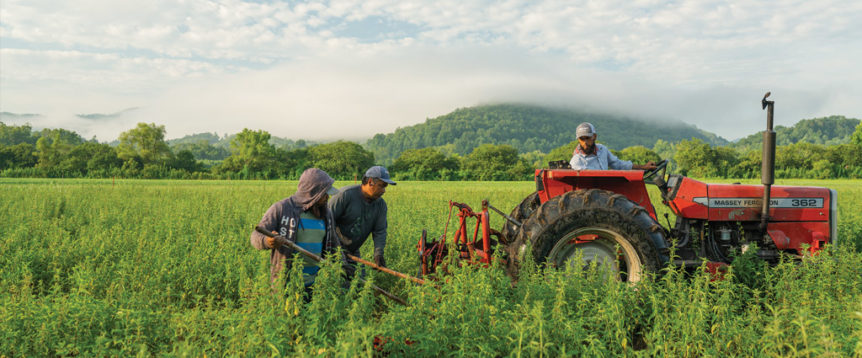Farms come in many shapes and forms. Chances are the 350-acre plot that constitutes the Gaia Herbs farm does not match what comes to mind when you hear the word “farm.”
It’s not so much the plots and crops, or cows or animals; it’s a magical world of biodiversity, which is why the farm is located exactly where it is.
“We are located in Brevard, North Carolina, in a biodiversity hotspot near Pisgah National Forest,” explains Thomas Leonard, Gaia Herbs farm operations manager. Certified organic for 26 years, the farm boasts an amazingly rich soil. So much so that Leonard says, “We farm soil more than we farm plants.”
Prior to Gaia taking over the property, the farm was a cattle ranch. And the cattle played an instrumental role in building the foundation of the soil, explains Kate Renner, operations assistant manager. Gaia has augmented that foundation with regenerative agriculture practices that involve crop rotation and cover cropping.
“We are methodical about our cultivation practices,” says Renner. “With diversity of cover crops, we ensure we can catch carbon in the soil through the year. We make sure there is always a living root in the ground to mitigate flooding, and to make sure the company is being a steward to rivers and preventing sediment from the farm from reaching the rivers when there is rain. We put in sediment ponds, and we can use that soil to put it back in our fields.”
Promoting diversity of pollinators and species is another big part of the work Leonard, Renner and their team of farmers do. “We work to create good habitat for native species and plant wildflower mixes in areas where we are not farming, encouraging pollinators and habitat for all flora and fauna and improving the biodiversity for herbs,” says Renner.
Ultimately, the farm grows 20 to 30 herbs a year, which account for 20 to 30 percent of all the material the company uses in its products. Including the plants grown in greenhouses on the property, the farm is home to approximately 6 million plants, with most of the raw materials being hand harvested.
Yet, the farm isn’t just about profit. They also offer educational classes and trainings, mentorship and plant donations, and more. Plus, they grow up to 10 acres of vegetables each year to share with employees; anything that is not used is donated to local food banks.
“The company’s motto is connecting plants with people, so it’s really cool because we do that through a bottle in stores, but we get to do it in other tangible ways on the farm and in our community,” says Leonard.
You can visit the farm
But if that’s not possible, the company’s “Meet Your Herb” program, accessible by a QR code on the back of each product, shares how the herbs in that product were grown, harvested, extracted and tested, and if they are from the farm or one of the company’s sourcing partners.

